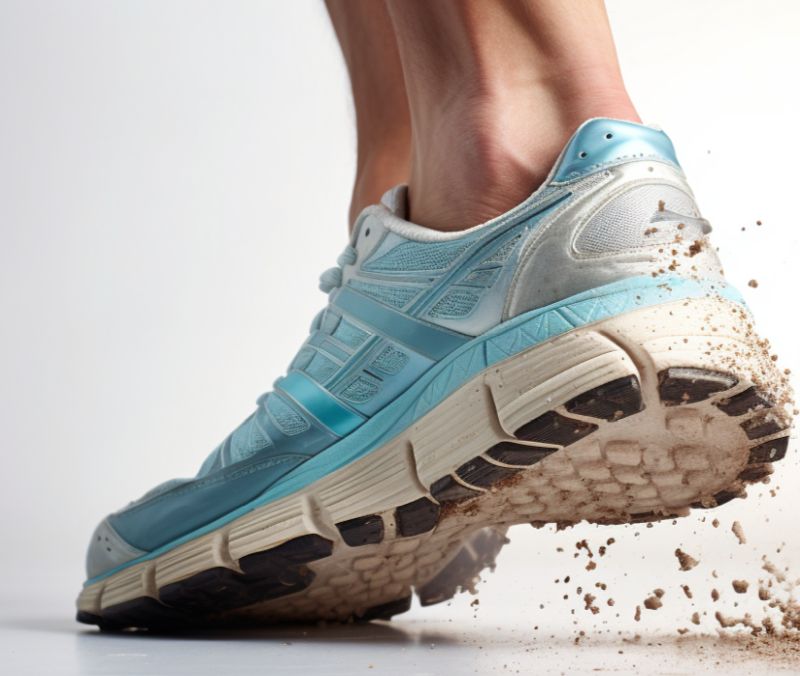
Heel pain can be a debilitating issue that affects your daily life and mobility. Whether you’re an athlete, someone who spends long hours on their feet, or simply dealing with the discomfort of heel pain, finding effective solutions is crucial. In this comprehensive guide, we’ll delve deeper into the causes of heel pain and provide you with valuable insights into the various solutions available to help you reclaim comfort and mobility.
Understanding Heel Pain:

Common Causes:
Exploring common causes of heel pain will provide a foundation for effective treatment strategies. It can be attributed to various factors, including:
- Plantar fasciitis. It is one of the most common causes of heel pain, resulting from inflammation of the plantar fascia—a band of tissue that connects the heel bone to the toes.
- Contributing Factors: High-impact activities, inadequate footwear, and tight calf muscles can increase the risk of developing plantar fasciitis.
- Heel spurs. They are bony outgrowths that develop on the underside of the heel bone. While not always painful, they can cause discomfort when they press on surrounding tissues.
- Contributing Factors: Prolonged strain on the plantar fascia and repeated tearing of the membrane covering the heel bone can lead to the formation of heel spurs.
- Achilles tendinitis. This involves inflammation of the Achilles tendon, which connects the calf muscles to the heel bone.
- Contributing Factors: Intense physical activity, sudden increases in exercise intensity, and inadequate stretching can contribute to Achilles tendinitis and subsequent heel pain.
- other biomechanical issues.
Symptoms:
Identifying the symptoms of heel pain is the first step in addressing the issue. Recognizing these signs early on can facilitate prompt intervention. These symptoms may include:
- sharp or dull discomfort
- swelling, redness, and stiffness.
At-Home Remedies:
Stretching Exercises:

Incorporating regular stretching exercises into your routine can significantly alleviate heel pain. Focus on exercises that target the Achilles tendon and plantar fascia, promoting flexibility and reducing strain on the heels.
Ice and Heat Therapy:
Alternating between ice and heat therapy can help manage inflammation and soothe discomfort. Ice packs can be applied for 15-20 minutes at a time, while heat therapy can enhance blood flow and promote healing.
Proper Footwear:
The significance of proper footwear cannot be overstated. Ensure your shoes provide adequate arch support and cushioning. Consider orthopedic or custom-made shoes for a tailored solution to your specific foot anatomy.
Medical Interventions:
Physical Therapy:
A physical therapist can play a crucial role in addressing the root causes of heel pain. They can guide you through tailored exercises to strengthen the muscles supporting the foot, improve gait, and promote overall foot health.
Orthotic Inserts:
Customised orthotic inserts can provide additional support and stability, redistributing pressure on the feet and alleviating heel pain. Consult with a podiatrist to determine the most suitable orthotic solution for your needs.
Medications:
Nonsteroidal anti-inflammatory drugs (NSAIDs) and pain relievers can be recommended to manage pain and inflammation associated with heel issues. However, it’s essential to use these medications under the guidance of a healthcare professional.
Professional Treatments:
Shockwave Therapy:
Shockwave therapy involves the use of sound waves to stimulate healing in the affected area. This non-invasive treatment can be particularly effective for chronic cases of heel pain that haven’t responded to other interventions.
Corticosteroid Injections:
In cases of severe inflammation, corticosteroid injections may be recommended to provide rapid relief. However, these injections are generally reserved for short-term use due to potential side effects.
Surgery:
Surgical options, such as plantar fascia release or heel spur removal, may be considered for persistent and severe cases of heel pain. These interventions are typically reserved for situations where conservative treatments have proven ineffective.
Preventive Measures:
Maintaining a Healthy Weight:

Excess weight can exacerbate heel pain by placing additional strain on the feet. Adopting a healthy lifestyle that includes regular exercise and a balanced diet can contribute to weight management and alleviate stress on the heels.
Proper Foot Care:
Incorporate proactive measures into your daily routine, such as regular foot massages, stretching exercises, and maintaining good posture. These practices can prevent the recurrence of heel pain and promote long-term foot health.
When to Seek Professional Help:
Persistent Pain:
If heel pain persists despite at-home remedies, it’s crucial to seek professional help. A healthcare professional, preferably a podiatrist or orthopedic specialist, can conduct a thorough examination, including imaging studies if necessary, to determine the underlying cause.
Red Flags:
Certain symptoms, such as severe swelling, sudden onset of intense pain, or the presence of systemic issues like fever, may indicate a more serious underlying problem. In such cases, immediate medical attention is warranted.
Conclusion:
Heel pain, though challenging, is a manageable condition with the right approach. By combining at-home remedies, medical interventions, and preventive measures, you can find relief and regain the freedom to move without discomfort. If you’re experiencing persistent or severe heel pain, consult with a healthcare professional for personalised guidance and a tailored treatment plan. Your journey to pain-free mobility begins with understanding the causes and implementing a comprehensive strategy to address heel pain at its roots.



